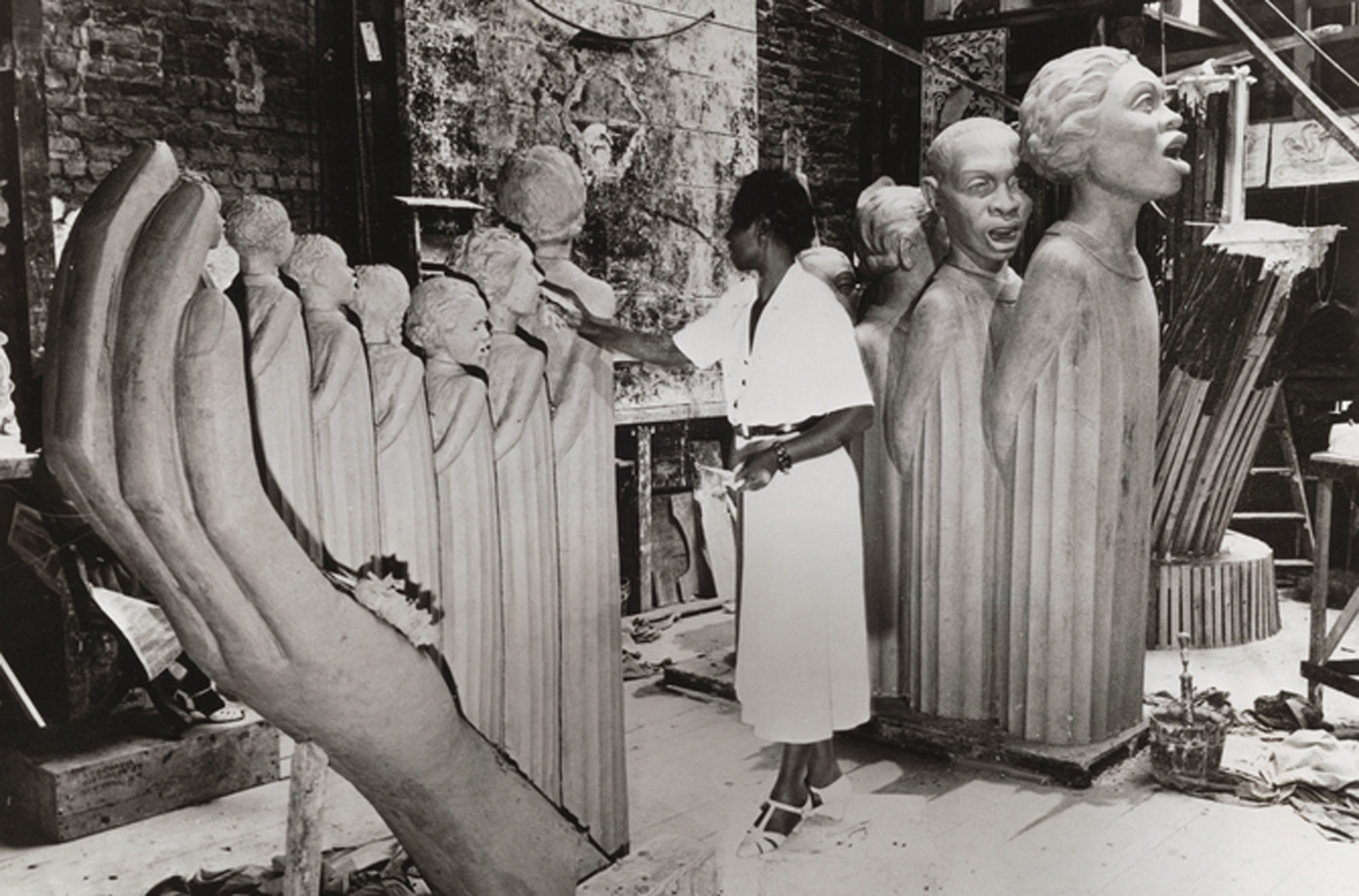Where Are Black Women in Monumental Art?
Dixon Li, a doctoral candidate in English, reveals a critical missing piece in the public monuments discourse.
Monuments and who and what they represent have been a subject of intense national discourse. Missing from that conversation is the presence—or lack thereof—of Black women in the making of monuments and as the subject of monuments, says Dixon Li, a doctoral candidate in English. Li is also examining how representations of Black women may exist but remain hidden from the public eye.
Li, who is also pursuing graduate certificates in cinema and media studies as well as gender, sexuality, and women's studies, is interested in how artistic representation is impacted by race, gender, and sexuality, and how the histories of artmaking can be understood through those lenses.
While the depiction of Black women in monuments are few, their research looks at ways in which Black women impacted monumental art and culture, while bringing examples of more hidden history to the fore.
They explain, “Looking for Black female presence in the cultural tradition doesn't always mean looking for a Black female being depicted in sculpture. There are certain motifs, themes, and styles through which there's probably already a Black female presence and maybe we're just not as attuned to detecting it.”
In an article for Monument Lab, Li looks at examples of Black female artists whose careers were impacted by their race and gender. An example is Augusta Savage, a Black female sculptor who created a 16-foot tall sculpture for the 1939 World’s Fair called The Harp. Because Savage couldn’t afford to cast her work in bronze, her plaster sculpture—the most photographed piece of art at the fair—was destroyed at the close of the event.
“I found that heartbreaking,” says Li, who also notes that Savage’s scholarship to the Fontainebleau School of Arts in Paris was rescinded in 1930 when the committee discovered she was Black. “When you’re dealing with material art, it’s far more costly to produce than, for example, a dance piece that uses your body and maybe a performance space. You need money to create the art and you need money to preserve it.” Historically, that wasn’t the reality for most Black female artists.
Li is also intrigued by what Savage did when she acquired money later in life.
“Savage didn’t make sculptures in bronze or try to establish a big art career with commissions or museum placements. Instead, she chose to open up a local school for people in her community,” they explain. “That is one example of how artmaking doesn’t need to circulate through material objects or monumental narratives but can circulate by keeping a particular type of tradition alive in communities, in this case, in the Black community.”
Another Black female sculptor, Edmonia Lewis created a 3,015-pound Neoclassical sculpture of Cleopatra for the 1876 Centennial Exposition in Philadelphia. Li says Lewis was the first Black female sculptor to achieve international fame. However, her The Death of Cleopatra represented the queen as a “woman with physiognomic features associated with white women, a fact that drew much acclaim for accuracy from white critics and disappointment from some Black visitors,” writes Li.
Savage didn’t make sculptures in bronze or try to establish a big art career with commissions or museum placements. Instead, she chose to open up a local school for people in her community.
Lewis’ choice was a strategic one, Li explains. “Since Lewis’ Cleopatra was Neoclassical and white, art critics could not accuse Lewis of inserting herself as a subject, nor could they criticize her skills as a sculptor. The tradition she mastered required adhering to implicit whiteness for Black genius to, quite literally, matter.”
While the conversations and debates about taking down monuments continues, Li wants the public to understand the hidden role of Black women in monumental art and for society to keep its eye on the larger picture.
Li, who is also an interdisciplinary artist, says, “It’s great that we’re thinking more about how to represent a different history in monumentation and how to get more people into the pipeline to make this kind of art, but that discourse can sometimes make it seem as if this problem is new or we are coming up with innovative solutions. These are obstacles that have always existed for people of color, for queer creators and female creators, and removing racist monuments is not going to end racism.”
For Li, now is the time to figure out how to account for a much longer and larger history where discrimination has always been present and to attend to the structural inequities that are far more expansive than the act of removing monuments.
“I worry about our society getting caught up in a progress narrative where people become comfortable because they believe we’re making incremental progress on issues that require so much more,” they say. “My hope is that my article can reveal some extra histories to demonstrate that, yes, it can feel like taking down that monument is a big step (because it is a big step) but it's an overdue step and there’s so much other work and other history to attend to. A racist statue is just one symptom or icon of a much larger structure and history.”




